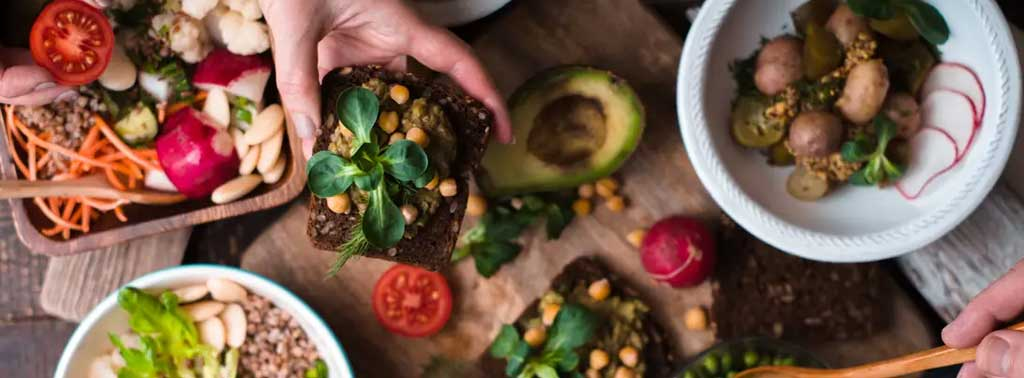The fat in my old diet mainly came from animal-derived sources, so when I transitioned a vegan diet, I was forced to take to Google and find a solution.
“Dear Google. How much fat should I eat per day on a vegan diet? And where the hell do I get it? Vegetable oil???”
Every vegan I’ve met since making this lifestyle change went through the same trouble. It’s not something you want to get wrong, as eating enough of the right fats is incredibly crucial for things like supporting a healthy hormonal status, nutrient absorption, as well as optimizing physical performance and health.
Today I will explain exactly how much and what kind of fat you need on a vegan diet to optimally build muscle and lose fat, as well as supercharge your health. So, let’s get right into it!
101 on Fats
Together with carbohydrate and protein, fat is one of the three primary macronutrients that make up the calories we consume.
The role of dietary fat as a nutrient is twofold:
1. As you probably know, fat can be used by the body as an energy source – both the fat you consume as food and the fat that is already stored in your cells, depending on circumstances.
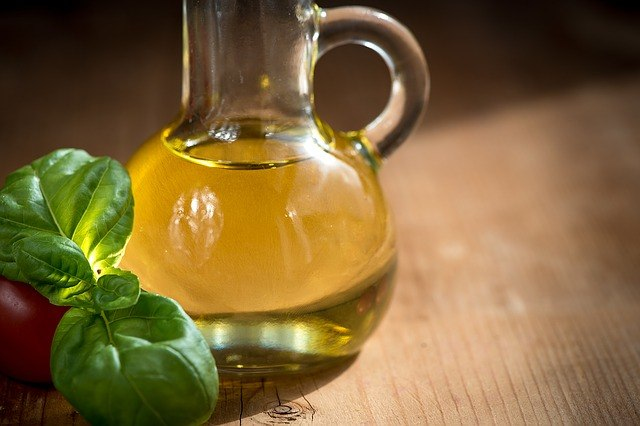
2. Some of the fatty acids in your diet are classified as essential nutrients and cannot be produced from scratch in the body. That means that your system requires a certain amount of fat every day in order to survive, sustain healthy hormonal status, manufacture structurally sound cell membranes, and support proper nutrient absorption.
Although not a vital body function per se, including some fat in your diet makes the food, you consume that much more enjoyable.
While that may seem trivial, remember that eating a diet you actually like will make long-term adherence and not falling off the diet-wagon a lot easier, which can help you reach your physical goals faster.
Anyways, I’m getting ahead of myself:
Fats (aka fatty acids aka triglycerides) are not a homogenous group, there’s actually quite a bit of variety.
Usually, we separate fats into the two broad groups saturated fats and unsaturated fats.
Saturated Fat
Saturated fats are found in high proportion in animal products such as meat, butter (you can try the vegan butter as alternative), cream, cheese, and other dairy products.
Now saturated fats are not exclusive to animal products – the tropical fat of coconut oil actually contains more saturated fat than even butter or lard!
You can usually tell that a fat is saturated if it’s solid in room temperature – as is the case with both butter and coconut oil.
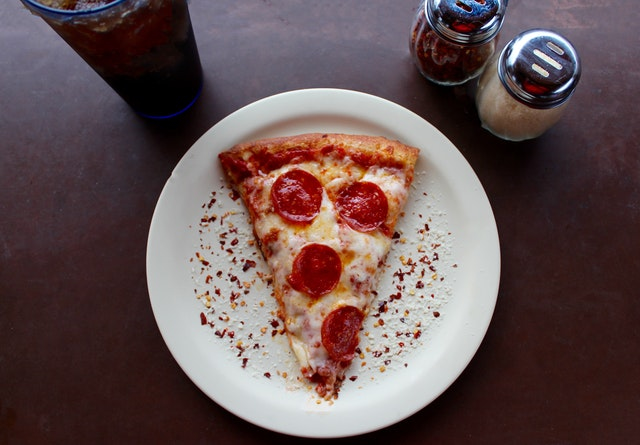
Other high-fat plant foods such as nuts, seeds, and soybeans also contain some amounts of saturated fats.
So What’s The Deal With Saturated Fats?
To say that saturated fat has been the source of some controversy over the last couple of decades is an understatement. I won’t get into the nitty-gritty of saturated fat in this post because frankly if you already eat a vegan diet, it’s not something you need to care about that much.
A predominantly whole food plant-based diet naturally contains very small amounts of both saturated fat and cholesterol, which is awesome and that’s all you need to know really. (All the cholesterol your body requires is synthesized from scratch by the body!)
I’ll just quickly say that despite what you might’ve heard or read from keto/low-carb gurus and fans, large amounts of dietary saturated fat is still not healthy.
Recommendations from various government panels and organizations such as the American Heart Association telling you to limit saturated fat are not part of a conspiracy born from an evil collusion between the sugar industry and aliens who try sneak sugar into your cereal and mind control you.
Or is it? (just kidding)
These recommendations are based on a huge body of evidence going back many years that suggests it’s a rather good idea for reducing your total risk of heart disease and stroke. People more well-read than myself on the subject have written tons written about saturated fat, and if you want to know more, check this article on the matter.
Here’s the bottom line:
If you eat an assortment of whole plant foods, you don’t need to worry about saturated fats. If you get 100% of your fats from coconut milk and fake meats, then I’d definitely incorporate more variety into your diet.
Unsaturated Fat
In contrast to saturated fats, unsaturated fats are predominantly found in plant foods.
You can usually tell that a type of oil is unsaturated if it’s liquid at room temperature, which is the case with olive and canola oil for example.
To get a better overview of the unsaturated fatty acids we have to look at the two subgroups and their functions and effects on the body (see also ‘ The Effects of Veganism on the Female Body ‘):
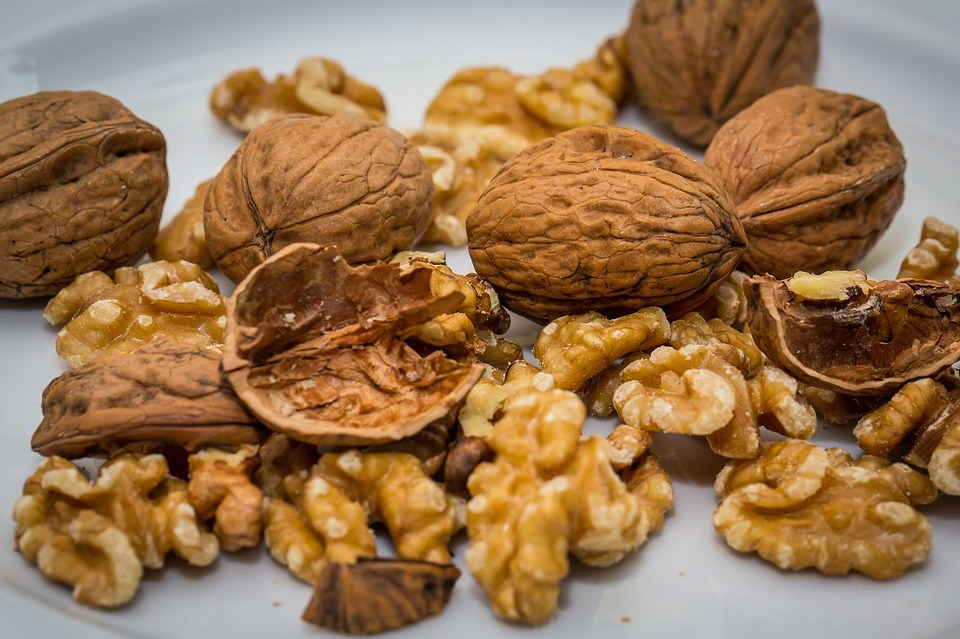
- Monounsaturated fats
- Polyunsaturated fats
Because the body takes ALA and turns it into the other two kinds of omega-3 fatty acids, vegans don’t usually need to worry about not getting DHA and EPA through food
Gaia.com
Monounsaturated fat
Monounsaturated fat, e.g. oleic acid or omega-9, is present in varying amounts in different nuts (see also ‘Which Are the Most Protein-packed Nuts?‘) and seeds such as walnuts, peanuts, avocados, macadamia nuts, etc.
Getting your servings of nuts and seeds per week has been associated with a reduced risk of cardiovascular disease. So, it would seem that monounsaturated fats in the matrix of whole plant foods along with fiber, protein, vitamin E, and polyunsaturated fats do you nothing but good (just keep it in moderation to avoid gaining weight) (1).
You’ll also find large amounts of monounsaturated fat in refined plant oils such as olive oil, canola oil, peanut oil, safflower oil, and sesame oil.

The term ‘oleic’ actually means “derived from olives” as olive oil contains more than 70% mono-type fats.
Now:
As you’re probably aware, olive oil has been aggressively marketed as a health food and panacea for heart disease, but there’s not really much supporting this claim – in fact, the exact opposite might be true. While replacing saturated fat with monounsaturated fat might lower cholesterol levels – it does not prevent coronary artery atherosclerosis, or in plain English, a buildup of plaque in the arteries (the leading cause of heart attacks) (2).
In a famous study, monkeys were put on a baseline diet rich in cholesterol and then divided into three different groups eating either saturated fats, monounsaturated fats or polyunsaturated fat. And they ate this way for over 5 years (3).
After 5 years, the group that was fed monounsaturated fat did see a decrease in cholesterol levels but had developed the same amount of artery plaque buildup as those who were fed saturated fat. And the third group, monkeys that were fed polyunsaturated fat, had seen the biggest drop in both cholesterol and atherosclerosis.
The bottom line:
There is a significant amount of evidence indicating that so-called ‘heart-healthy’ oils are not that good for us (later in the article I’ll elaborate on why refined oils aren’t particularly healthy).
Monounsaturated fats are best consumed in the form of whole plant food, and not by gulping down heart-healthy refined oils.
Polyunsaturated Fat
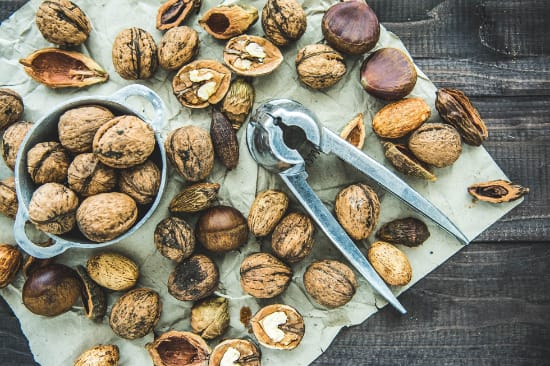
As the monkey study I cited above suggested, if you need something to replace saturated fat with, your best bet is polyunsaturated fatty acids (PUFAs):
Both clinical trials and epidemiological studies indicate that they can help reduce the risk of heart disease (4).
And it is in this group of dietary fats where we find the all-important essential fatty acids (EFA) I mentioned before:
- check Alpha-linolenic acid (ALA), a short-chain omega-3 fatty acid. Found in high concentrations in flax, chia and hemp seeds as well as walnuts.
- check Linoleic acid (LA), a short-chain omega-6 fatty acid. Found abundantly in most plant foods, especially nuts and seeds.
The polyunsaturated omega-3 and omega-6 fats are vitamin-like in that they are required for our survival and normal metabolism, as building blocks for our cell membranes, the transportation, and oxidation of cholesterol, and the production of local hormones called eicosanoids that play critical roles in immune and inflammatory responses.
What’s The Best Ratio of Omega-6/Omega-3?
You may have heard that it’s a good idea to reduce your omega-6 and/or increase omega-3, to balance the two. Why is that?
Well here’s the theory:
Many of the profound effects of ALA and LA are because they convert into other bioactive compounds.
- check ALA converts to the longer chain omega-3’s EPA (eicosapentaenoic acid) and DHA (docosahexaenoic acid), both which are responsible for the powerful anti-inflammatory effects of omega-3 (5).
- check LA converts to the long chain omega-6 AA (arachidonic acid), a precursor to a variety of signalling molecules called eicosanoids – some of which are inflammatory in their nature (6).
And that’s why poor omega-6 has gotten such a bad rep. Eating a bunch of LA rich foods should, in theory, elevate levels of inflammatory arachidonic acid (AA) in our cell membranes, which would cause excessive inflammation and a bunch of other diseases associated with chronic inflammation.
Hanging in there?
Well, the gigantic hole in this theory is that whether you increase dietary linoleic acid from baseline by up to 551%, or decrease it by 90%, it doesn’t influence levels of arachidonic acid (7).
There is virtually no evidence that the addition of linoleic acid to your diet increases markers of chronic inflammation. I just don’t think that obsessing over this arbitrary, “golden” omega-6:omega-3 ratio is necessary if you make sure to eat an otherwise healthy and varied whole food, vegan diet (8).
This is especially true considering that omega-6 rich nuts and seeds have been shown to offer a large variety of health benefits. What I do think is worth obsessing over, however, due to the wide range of health benefits that PUFA offers, is getting your omega-3 every day, either from flax seeds or a good quality vegan omega-3 supplement (9).
Another option is to increase your intake of ALA, which may boost the amount of omega-3 fat in your blood. Some experts suggest that vegans should eat double the recommended amount of ALA. For instance, you could include both a tablespoon of ground linseed and six walnut halves in your daily diet.”
Why Oil Isn’t a Particularly Healthy Food
Throughout this article, I’ve hinted at why oils aren’t very healthy foods.
First, they are more or less the reason why junk food (see also guide on keto-friendly junk food) is so tasty. You see, there’s a shit-ton of calories with no nutrients (except for perhaps some trace vitamin E). You could argue that it’s even worse than sugar, as fat provides 9 kcal per gram while sugar provides only 4 calories per gram.
Wait, it gets way worse.
One study found that adding either 60 ml of olive, soybean or palm oil to a potato soup meal all resulted in 32.1% decrease in flow-mediated dilatation. In language us mortals can understand, this means a reduced capacity for the blood vessels to relax and dilate.
This type of endothelial dysfunction is not a good thing when it comes to preventing heart disease, as it’s a risk factor for clogged arteries.Additionally, there was also a 27% increase in plasma triglycerides after each meal.
Another study yielded similar results using olive oil in a 900 kcal meal with 50 grams of fat, reducing flow-mediated vasodilation by 31% and also increasing triglyceride levels (10).
Finally, meals high in both butter and olive oil cause a similar increase in blood coagulation factors and triglycerides. In case you didn’t know, you don’t want elevated blood coagulation factors as it might lead to blood clots inside the blood vessels. And these can be lethal (11).
How Much Fat Should You Eat?
At this point, we have a pretty good understanding of fat and its physiological functions. Now for the question you’ve all been waiting for:
How much fat should you eat on a vegan diet?
This will vary on many different factors such as your individual genetics, gender, needs and preferences, body composition goals, the amount of exercise and many other factors.

But a good starting point is to make sure you’re getting at least the minimum amount of the essential fat required. The established adequate daily intake for men is 17 g LA and 1.6 g ALA, and for women 12 g LA and 1.1 g ALA.
I reckon this is quite a bit lower than general recommendations such as 30% of your calories coming from fat, but the truth is that we don’t need that much fat to survive (other nutritional panels actually recommend even lower numbers) (12).
Beyond meeting these basic needs, we get into the discussion of what is required to support a healthy blood lipid and hormonal profile, as well as the individual’s needs and preferences. And honestly, you definitely want to eat more than 20 g of fat per day which is likely to be a recipe for disaster.
I would recommend that you view these guidelines as the bare minimum you should hit per day, not as an optimal level for health or performance. For further customization of your macros and some general recommendations for healthy fat intake, I will dive a bit deeper into two of the most common fitness goals: adding muscle and losing fat:
How Much Fat Do You Need to Build Muscle?
Dietary fat intake has been shown to influence your hormone levels, and one of those hormones is the anabolic hormone testosterone which plays a key role in promoting muscle growth (13).
Naturally, it would then make sense to try and maximize levels of testosterone to enhance muscle gains .
So how do we go about achieving that?
Well, we have one study that took a group of male test subjects and put them on either a 41% fat diet or a 19% fat diet (14).

That’s cutting fat intake roughly in half, so you would expect to see a drastic change in testosterone (see also ‘6 Natural Foods to Boost Testosterone‘), right? Not the case.
The men on the lower fat diet had about 13% lower testosterone levels, and that’s it – full article here: Testosterone levels in vegan men.
Another relevant study had 26 male volunteers participate at the Pritikin Centre, that basically prescribes a traditional WFPB diet high in unprocessed whole foods like fruits, vegetables, beans, and whole grains. After 26 days they had experienced no change in testosterone levels (15).
Another study took 39 men from eating a baseline high-fat diet (>30% calories as fat) to a low-fat, high-fiber diet (~15% calories as fat) (16). Results?
Testosterone levels fell by only 12%.
Finally, there’s one particularly interesting study that looked at the effect diet has on hormones in males, where vegans surprisingly had 13% higher testosterone levels than meat-eaters (17)!
Alright with all of this information, how much fat should we be eating to build muscle (see also our guide to wider biceps)? Well, we know that reducing fats from around 30-40% to 20% may slightly negatively impact testosterone levels, but then again vegans also have higher baseline levels.
Being real here, these kinds of small fluctuations in testosterone are not likely to have any impact whatsoever, positive or negative, to your muscle and strength gains (see also ‘The Best Compound Shoulder Exercises To Improve Strength‘). At least not compared to the powerful effects of actual steroids, or other dietary components you have control over such as adequate protein and carb intake (which are huge for optimal muscular development) (18).
But if you’re really low on testosterone levels, you might want to check out this testosterone booster, Centra Peak, to assist in building your muscles.
Here’s the key takeaway on the fat intake for building muscle:
A fat intake of around 20-30% of daily calories will allow your hormonal
(see safe estrogen blockers) system to work optimally, and it gives you adequate room to pack in as many carbs as possible which helps a ton with increasing gym performance and enhancing recovery.
How Much Fat Do You Need to Lose Fat?
If I would let a low-carb proponent answer this question the answer would look something like:
“Bro, jack up the fats and cut out all carbs, so you get magical wizardry metabolic advantages that melt away fat!!”
In reality, energy balance is what dictates fat loss, and numerous studies show there are no differences between high-carb and low-carb diets (19).
Now: Obviously, testosterone levels matter just as much when you are bulking up and adding muscle, as it does when you are cutting down to give your vegan muscle more definition.

So while keeping fats somewhere in the 20-30% range will optimize testosterone levels in theory, this can become somewhat unrealistic given the nature of how weight loss looks like.
If you want to retain muscle mass and shred that annoying fat, then a high-protein and high-carb approach is likely to be superior to low-carb dieting. (20) (21)
How is that, you ask?
You see, cutting carbohydrate beyond a certain point during weight loss will deplete glycogen stores and kill your workout performance, which is not good at all for your gains.
A recent study on natural guidelines for bodybuilding found that it’s extremely important to eat a certain threshold of carbs every day in order to keep your gains (22):
High-protein and low-carb diets might be great for losing weight, but there seems to be a carbohydrate threshold, meaning that eating too few carbs could contribute to LBM losses and negatively affect gym performance. A lower fat intake between , which has been, will serve you the best if more fat would mean a reduction in carbohydrate or protein below ideal ranges.
As a result, if you need to bring calories down and sacrifice extra kcals in a weight loss phase (see sleep), getting rid of fat first and foremost, and then carbs is the best solution. There’s even more evidence to back up these claims, with bodybuilding competitors who end up placing in the top 5 spots consuming way more carbs than those who lost (23).
Here’s what I suggest you do:
15-25% of calories recommended before for bodybuilders (24)
“To top it off, the low-carbers had a greater decrease in C-reactive protein, a measure of inflammation in the body.” – Kamal Patel
If you’re looking to cut out all carbs, this article might be useful: Comparing keto vs vegan
Good Sources of Vegan Fat
There are so many more sources of healthy vegan fat other than oils. Your best bet is going to be nuts and seeds: chia seeds, flax seeds, peanuts, walnuts, macadamia nuts, and brazil nuts, etc.
What might surprise you is that other components of your plant-based diet such as whole grains, starches, legumes, fruits, and vegetables also contribute substantial amounts of essential fatty acids.
For instance, 100 grams of black beans provide 278 mg ALA. And 200 grams of oatmeal provides a whopping 5,4 grams of LA.

Not mandatory by any means but highly, highly recommended is to also include one tablespoon or more of flax seeds per day.
This is a very convenient way of making sure you get enough of the precious omega-3s per day, as one tablespoon provides 1.6 g of ALA. If you want to ensure you’re getting those almighty long-chain omega-3s, I would also suggest that you supplement with a quality, vegan algae-based omega supplement.
(For more information on vegan algae-based omega-3 supplement check out this article)
Here’s a list of some awesome plant-based fat sources:
- Flax seeds – This is one of those high fat foods that you should always keep plenty in stock of. It’s especially high in poly-fats and low in monos, while also providing a load of your daily vitamin and mineral needs. Just sprinkle some on your cereal and salads (see also ‘Vegan Salad Recipes High in Protein‘) to give yourself a huge boost.
- leaf Chia seeds – an excellent balance of carbs and fat, which is ideal for building muscle. You’ll need the energy from carbs, and the mix of healthy fat will further boost your immune and digestive system. Personally, I add these to my morning cereal, as they give a nice flavor as well.
- leaf Cashew nuts – are quite high in saturates, but they also pack a load of minerals as well. While they are tasty in your salads and especially in curries, you have to be careful about their origin. Most cashews come from poor Asian countries, so check the labels for organic and fair trade symbols.
- leaf Brazil nuts – Another one of my favorite high fat vegan foods is Brazil Nuts. Yes, they are huge, but you just can’t beat the flavor. High in poly and monosaturates, they also provide a huge amount of dietary fiber. Same as cashews, just look out for fair trade symbols.
- leaf Almonds – Almonds have become increasingly popular in the vegan community in recent years, especially in the form of almond milk. It’s rich in monosaturates and will also give you a boost in electrolytes like potassium. If you exercise a lot, then this is a must on your meal plan.
- Peanuts – Peanuts have a bad reputation, but if you eat them unsalted and straight out of the shell, then it’s an ideal solution as a vegan nutrition booster. Beyond the healthy fats, you’ll also get a boost in minerals and fiber that will significantly improve your digestion.
- Avocado – Every balanced vegan diet should include avocados. Containing mainly monosaturates, you get all the easy to digest omegas in a very concentrated form. Whether you add them to a salad for lunch or just have one as an afternoon snack, they should be in every vegan meal plan especially for bodybuilders since it’s high in calories.
- leaf Macadamia nuts – One of the highest fat nuts around are Macadamias. They aren’t the easiest to find in most supermarkets, and they’re also not the cheapest. But if you’re sick of some of the other nuts, then they’re a great way to get some different flavors.
- leaf Walnuts – You don’t just have to restrict these to salads, as walnuts are an excellent snack throughout the day. High in carbs and fiber, they will also boost your energy levels while keeping your digestion in top shape.
- leaf Tahini – This sesame seed paste is something that people either hate or love. With just two spoonfuls you can take in a ton of healthy fats as well as many of your essential vegan nutrition needs like minerals. Give it a try and keep in mind that it might take a while to get used to the bitter flavor.
- leaf Chickpeas – One of my absolute favorite sources of fat, protein and essential minerals is chickpeas. I rarely have a lunch or dinner without them. They’re light and tasty and are wonderful in a spicy curry.
Conclusion
Understanding all your dietary needs on a vegan diet does take quite some effort and experimenting with your meal plan. This is especially the case if you want to build up some muscle as the volume of certain nutrients you need to eat is much higher.
Hopefully, the above information will have clarified all your questions and most importantly helped you figure out how much fat per day a vegan needs to take in. The advantage you’ll have is that you’ll be avoiding all the really bad trans fats that meat eaters are subject to a lot.
If you’re struggling to take in all your healthy dietary fat from the above recommendations, then the best thing you can do is supplement your diet with a vegan based algae product. I use these on a regular basis, and they have definitely helped me achieve a far better balance. Check out our supplement section for our top recommendations.
If you have some other great ideas that have worked in your meal plans, then please send me a message. We love hearing from readers and are constantly looking for new info to add to these pages.
[tcb-script type=”application/ld+json”]{“@context”: “http://schema.org/”,”mainEntityOfPage”: “https://veganliftz.com/fat-vegan-diet/”,”@type”: “Article”,”headline”: “Fat on a Vegan Diet: Everything You Need to Know (The Complete Guide)”,”datePublished”: “2017-12-11″,”dateModified”: “2019-07-22″,”description”: “On a vegan diet, how much fat was I supposed to eat? And where should I get my fat from? These techniques we learned about the high-fat vegan diet are so great that we were…”,”keywords”: [“vegan sources of fat”, “fat vegan”, “vegan fat sources”, “high fat vegan diet”, “low fat vegan diet”, “high fat vegan foods”, “sources of healthy fats”],”image”: {“@type”: “ImageObject”,”height”: “379”,”width”: “725”,”url”: “https://mlbmbvodvbvn.i.optimole.com/w:auto/h:auto/q:100/f:best/https://veganliftz.com/wp-content/uploads/2017/12/HOW-MUCH-FAT-SHOULD-YOU-EAT-ON-A-VEGAN-DIET_.jpg?x12904&x12904&x12904″},”author”: “Jason Hughes”,”publisher”: {“@type”: “Organization”,”name”: “Vegan Liftz”,”sameAs”:[“https://www.facebook.com/veganliftz/”,”https://twitter.com/veganliftz/”,”https://www.pinterest.com/veganliftzofficial/”,”https://www.instagram.com/veganliftz/”,”https://www.youtube.com/channel/UCVilJCjZsaI1Q50fbM_IsnQ”,”https://goo.gl/maps/sC3u4cuyWLqYwhBY7″],”logo”: {“@type”: “ImageObject”,”url”: “https://mlbmbvodvbvn.i.optimole.com/w:auto/h:auto/q:100/f:best/https://veganliftz.com/wp-content/uploads/2019/04/Veganliftz_White_Small.png”}}}[/tcb-script]
References:
1. Eating Regular Variety of Nuts Associated With Lower Risk of Heart Disease. (n.d.). Retrieved from http://www.acc.org/about-acc/press-releases/2017/11/13/14/08/eating-regular-variety-of-nuts-associated-with-lower-risk-of-heart-disease2. Degirolamo, C., & Rudel, L. L. (2010, November). Dietary monounsaturated fatty acids appear not to provide cardioprotection. Retrieved from https://www.ncbi.nlm.nih.gov/pmc/articles/PMC2995267/3. Rudel, L. L., Parks, J. S., & Sawyer, J. K. (1995, December). Compared with dietary monounsaturated and saturated fat, polyunsaturated fat protects African green monkeys from coronary artery atherosclerosis. Retrieved from https://www.ncbi.nlm.nih.gov/pubmed/74892304. American Heart Association. (n.d.). Retrieved from http://circ.ahajournals.org/content/early/2017/06/15/CIR.00000000000005105. Li, K., Huang, T., Zheng, J., Wu, K., & Li, D. (2014, February 05). Effect of marine-derived n-3 polyunsaturated fatty acids on C-reactive protein, interleukin 6 and tumor necrosis factor α: A meta-analysis. Retrieved from https://www.ncbi.nlm.nih.gov/pubmed/245053956. Granström, E. (1984, June). The arachidonic acid cascade. The prostaglandins, thromboxanes and leukotrienes. Retrieved from https://www.ncbi.nlm.nih.gov/pubmed/60903127. Rett, B. S., & Whelan, J. (2011, June 10). Increasing dietary linoleic acid does not increase tissue arachidonic acid content in adults consuming Western-type diets: A systematic review. Retrieved from https://www.ncbi.nlm.nih.gov/pmc/articles/PMC3132704/8. Johnson, G. H., & Fritsche, K. (2012, July). Effect of dietary linoleic acid on markers of inflammation in healthy persons: A systematic review of randomized controlled trials. Retrieved from https://www.ncbi.nlm.nih.gov/pubmed/228896339. Ros, E. (n.d.). Health benefits of nut consumption. Retrieved from https://www.ncbi.nlm.nih.gov/pmc/articles/PMC3257681/10. Vogel, R. A., Corretti, M. C., & Plotnick, G. D. (2000, November 01). The postprandial effect of components of the Mediterranean diet on endothelial function. Retrieved from https://www.ncbi.nlm.nih.gov/pubmed/1107964211. Effects of Dietary Fat Quality and Quantity on Postprandial Activation of Blood Coagulation Factor VII. (n.d.). Retrieved from http://atvb.ahajournals.org/content/17/11/2904.long12. https://www.heart.org/en/healthy-living/healthy-eating/eat-smart/fats/dietary-fats13. Volek, J. S., Kraemer, W. J., Bush, J. A., Incledon, T., & Boetes, M. (1997, January). Testosterone and cortisol in relationship to dietary nutrients and resistance exercise. Retrieved from https://www.ncbi.nlm.nih.gov/pubmed/9029197/14. Dorgan, J. F., Judd, J. T., Longcope, C., Brown, C., Schatzkin, A., Clevidence, B. A., . . . Taylor, P. R. (1996, December). Effects of dietary fat and fiber on plasma and urine androgens and estrogens in men: A controlled feeding study. Retrieved from https://www.ncbi.nlm.nih.gov/pubmed/894240715. Rosenthal, M. B., Barnard, R. J., Rose, D. P., Inkeles, S., Hall, J., & Pritikin, N. (1985, January). Effects of a high-complex-carbohydrate, low-fat, low-cholesterol diet on levels of serum lipids and estradiol. Retrieved from https://www.ncbi.nlm.nih.gov/pubmed/396648416. Wang, C., Catlin, D. H., Starcevic, B., Heber, D., Ambler, C., Berman, N., . . . Swerdloff, R. S. (2005, June). Low-fat high-fiber diet decreased serum and urine androgens in men. Retrieved from https://www.ncbi.nlm.nih.gov/pubmed/1574126617. Allen, N. E., Appleby, P. N., Davey, G. K., Key, T. J., (n.d.). Hormones (see also ‘What Are The Best Foods To Eat For Natural Steroid Release?‘) and diet: low insulin-like growth factor-I but normal bioavailable androgens in vegan men. https://www.ncbi.nlm.nih.gov/pmc/articles/PMC2374537/pdf/83-6691152a.pdf18. Hartgens, F., & Kuipers, H. (2004). Effects of androgenic-anabolic steroids in athletes. Retrieved from https://www.ncbi.nlm.nih.gov/pubmed/1524878819. Buchholz, & C, A. (2004, May 01). Is a calorie a calorie? Retrieved from https://academic.oup.com/ajcn/article/79/5/899S/469022320. Garthe, I., Raastad, T., Refsnes, P. E., Koivisto, A., & Sundgot-Borgen, J. (2011, April). Effect of two different weight-loss rates on body composition and strength and power-related performance in elite athletes. Retrieved from https://www.ncbi.nlm.nih.gov/pubmed/21558571/21. Walberg, J. L., Leidy, M. K., Sturgill, D. J., Hinkle, D. E., Ritchey, S. J., & Sebolt, D. R. (1988, August). Macronutrient content of a hypoenergy diet affects nitrogen retention and muscle function in weight lifters. Retrieved from https://www.ncbi.nlm.nih.gov/pubmed/3182156/22. Eric R Helms, Alan A Aragon, & Peter J Fitschen. (2014, May 12). Evidence-based recommendations for natural bodybuilding (see also ‘ Jon Venus Plant-Based Bodybuilder ‘) contest preparation: Nutrition and supplementation. Retrieved from https://jissn.biomedcentral.com/articles/10.1186/1550-2783-11-2023. A. J. Chappell, T. Simper, & M. E. Barker. (2018, January 15). Nutritional strategies of high level natural bodybuilders during competition preparation. Retrieved from https://jissn.biomedcentral.com/articles/10.1186/s12970-018-0209-z24. Lambert, C. P., Frank, L. L., & Evans, W. J. (2004). Macronutrient considerations for the sport of bodybuilding (see also ‘4 Obstacles to Creating the Perfect Bodybuilding Meal Plan‘) (see also ‘4 Obstacles to Creating the Perfect Bodybuilding Meal Plan‘). Retrieved from https://www.ncbi.nlm.nih.gov/pubmed/15107010
- Why is My Poop Black: Uncovering the Causes and Solutions - December 21, 2023
- Clear Protein Drinks: Optimal Hydration and Muscle Support for Athletes and Fitness Enthusiasts - December 21, 2023
- Does Apple Juice Make You Poop: Uncovering the Digestive Effects - November 29, 2023

